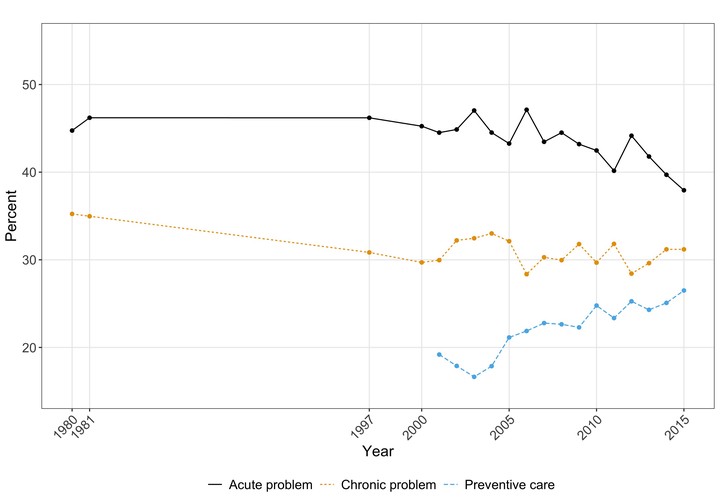
Abstract
Objective: To understand changes in reasons for visit to primary care in the face of an aging population, growing evidence for proactive preventive and chronic disease services, and the rise of the chronic care model.
Methods: We examined the reason for visits to primary care physicians using the National Ambulatory Medical Care Survey (NAMCS) from 1980–2015.
Results: Among all physicians, the percent of visits for prevention increased from 17% in 2001 to 20% in 2015. Among visits to primary care, most continued to be for acute problems – with the percent of visits for acute illness declining over the past 15 years, after remaining steady for two decades. Preventive care visits increased from 19% in 2001 to 26% in 2015. The percent of primary care visits for chronic conditions declined between 1980 and 2000, and then remained steady, accounting for 30% in 2001 and 31% in 2015.
Conclusions: Growing emphasis on chronic disease management is not reflected in the percent of primary care visits for chronic illness. This study highlights the potential utility of longitudinal data within a historical interpretive frame, while raising questions about the utility of using a main reason for visit to classify complex primary care visits.